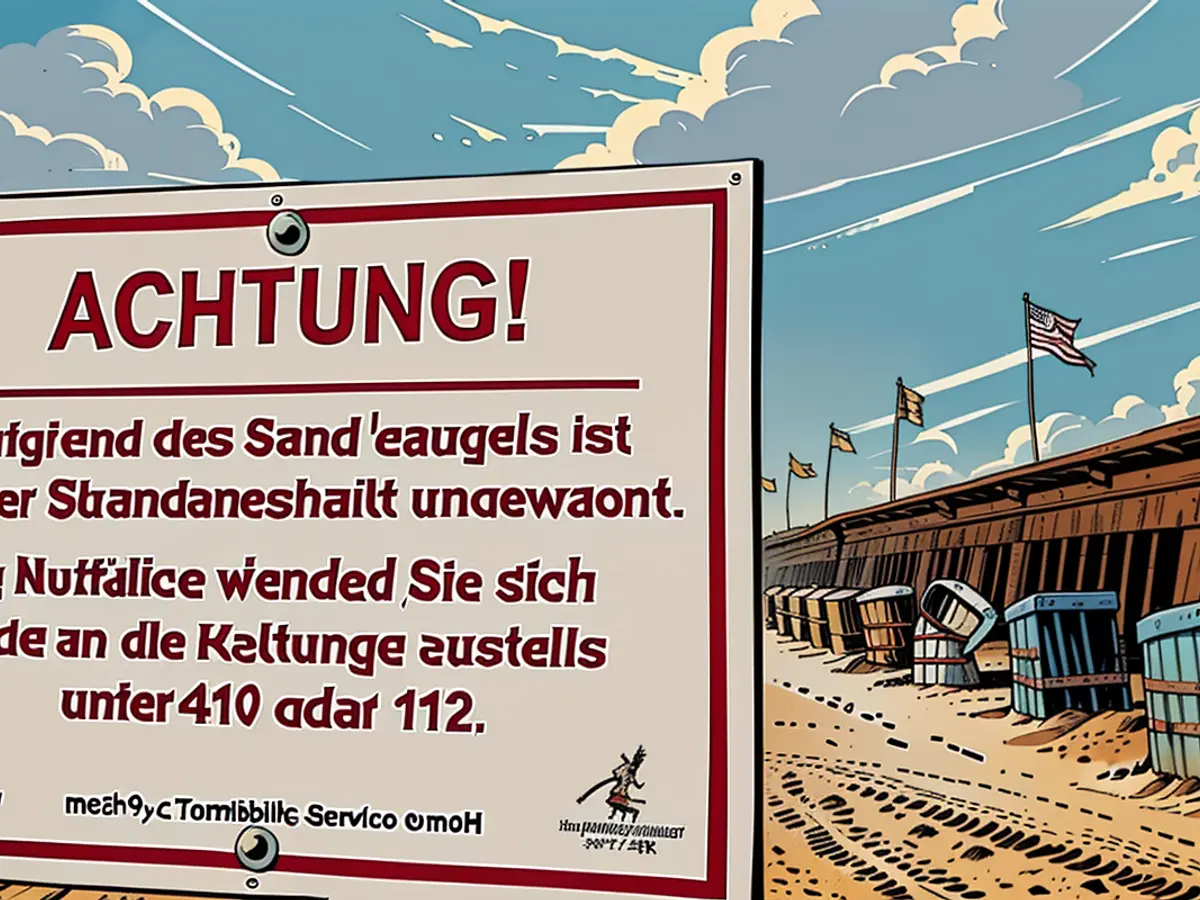summer vacation - Dangerous - Unguarded beach section on Sylt
Due to a precipice on the beach in Sylt's Westerland, a smaller section of the main beach is not monitored by lifeguards. Signs indicate that this section is unguarded due to a sand shortage.
A spokesperson for Sylt Tourism Service GmbH stated that they aim to sensitize guests through comprehensive signage and extensive information to use guarded bathing areas. Previously, "Bild" reported on this. At edges, bathing can be particularly dangerous because the apparently shallow water suddenly becomes deep.
Every year before the start of the season, it is checked which locations are suitable for lifeguard stations and the associated guarded bathing areas. Therefore, it is not unusual for the locations of guarded bathing areas to change from season to season. Since the West Coast is a unique natural area that is constantly changing, this is to be expected.
Swimming in the North Sea can be dangerous, especially during stormy weather
Swimming and bathing in the North Sea can always be associated with risks. For example, inflatable mattresses and similar items can be carried away by wind and currents.
Undertows form in certain weather conditions or, for example, at beach edges. It is recommended to only visit guarded beaches and pay attention to the beach flag system.
Numerous "Knebel flutings" in winter
In this winter, not large storm surges, but numerous individual "Knebel flutings" of the sandy coast have added sand to the North Sea. According to the National Coastal, National Park, and Sea Protection Agency Schleswig-Holstein (LKN), there were twelve such occurrences in this season. Other North Sea islands also reported significant losses of bathing beaches in the spring.
According to LKN, parts of the West side of the island are eroded annually by storms from the West and the resulting sea surges. To secure the beaches of Sylt, about 1.2 million cubic meters of sand are pumped in every year to protect the coast.
This measure serves solely for coastal protection. Touristic considerations do not influence the decision regarding how much sand a beach receives.
During my summer vacation in Schleswig-Holstein, I decided to explore the leisurely stretch of beach in Westerland. Unfortunately, I noticed an abrupt change in the beach's safety as I approached the North Sea, where the signs indicated an unguarded section due to a sand shortage. Despite the risks, I was drawn to the allure of the vast Nature surrounding me. However, I heeded the warnings and chose to enjoy my leisure time at the guarded bathing areas, mindful of the potential dangers of swimming in the North Sea, especially during stormy weather.








